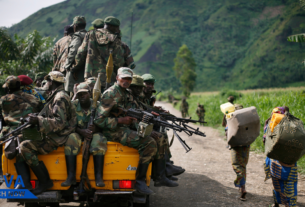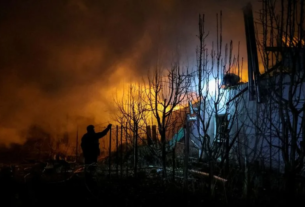More than 1,000 Syrians died in detention at a military airport near Damascus, according to a report released Thursday. These deaths were attributed to execution, torture, or maltreatment, and the airport facility has been notorious for these atrocities.
“This was a place of unimaginable suffering,” said the Syria Justice and Accountability Centre (SJAC) in its report. The organization traced these deaths to seven suspected grave sites using satellite imagery, witness testimony, and documents recovered after Assad’s removal.
You may be wondering how these grave sites were identified. SJAC combined satellite imagery with accounts from survivors and documents to pinpoint locations in and around the Mezzeh military airport, which lies on the outskirts of Damascus.
The grave sites span across the airport grounds, with others found in locations like Najha, a cemetery outside the city. Disturbed earth visible in satellite images of these locations matches the descriptions given by witnesses.
“These graves serve as a stark reminder of the brutal treatment detainees suffered,” said SJAC. Some of these sites, including one on the airport property, show long trenches consistent with reports of mass burials during the Syrian civil war.
You might wonder about the reliability of the evidence. While Reuters could not independently verify the mass graves through its own satellite analysis, the evidence from SJAC, including witness testimony and images, suggests these sites hold the remains of thousands of Syrians.
Witnesses have described the horrific conditions inside the detention facility. Many detainees were executed, tortured, or neglected, leading to their deaths at the airport, which became infamous for its brutal treatment of prisoners.
The report paints a grim picture of the airport as a site of systematic abuse. Satellite images reviewed by Reuters show large areas where the ground has been disturbed, and these areas match the locations identified by SJAC.
These findings could have significant consequences for the Syrian government. You may question whether there will be accountability for these actions, but the situation remains uncertain as the Assad regime has not commented on the report’s claims.
The mass graves uncovered at the Mezzeh airport and nearby areas add to the growing body of evidence of war crimes committed by the Assad government. These revelations are part of an ongoing effort to hold accountable those responsible for the suffering of countless Syrians.
For you, this report may bring attention to the ongoing human rights violations in Syria. The legacy of these crimes continues to haunt the country, and justice for the victims remains a distant hope.
The fate of these mass graves, and whether the Syrian government will be held accountable, remains unclear. However, the efforts by organizations like SJAC continue to shed light on the truth of what happened at the Mezzeh airport.
As these findings circulate, you can expect more attention to be given to Syria’s civil war and the violations that occurred. The international community may eventually act to hold perpetrators accountable for the deaths of over 1,000 Syrians at the military airport.




